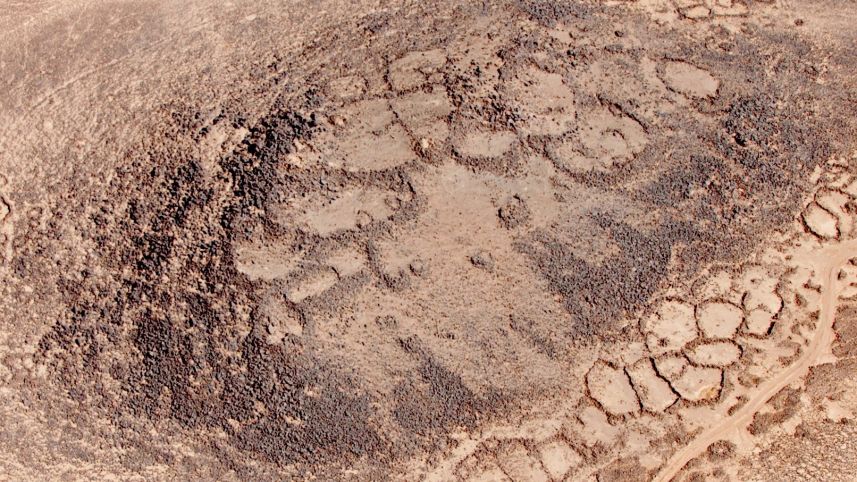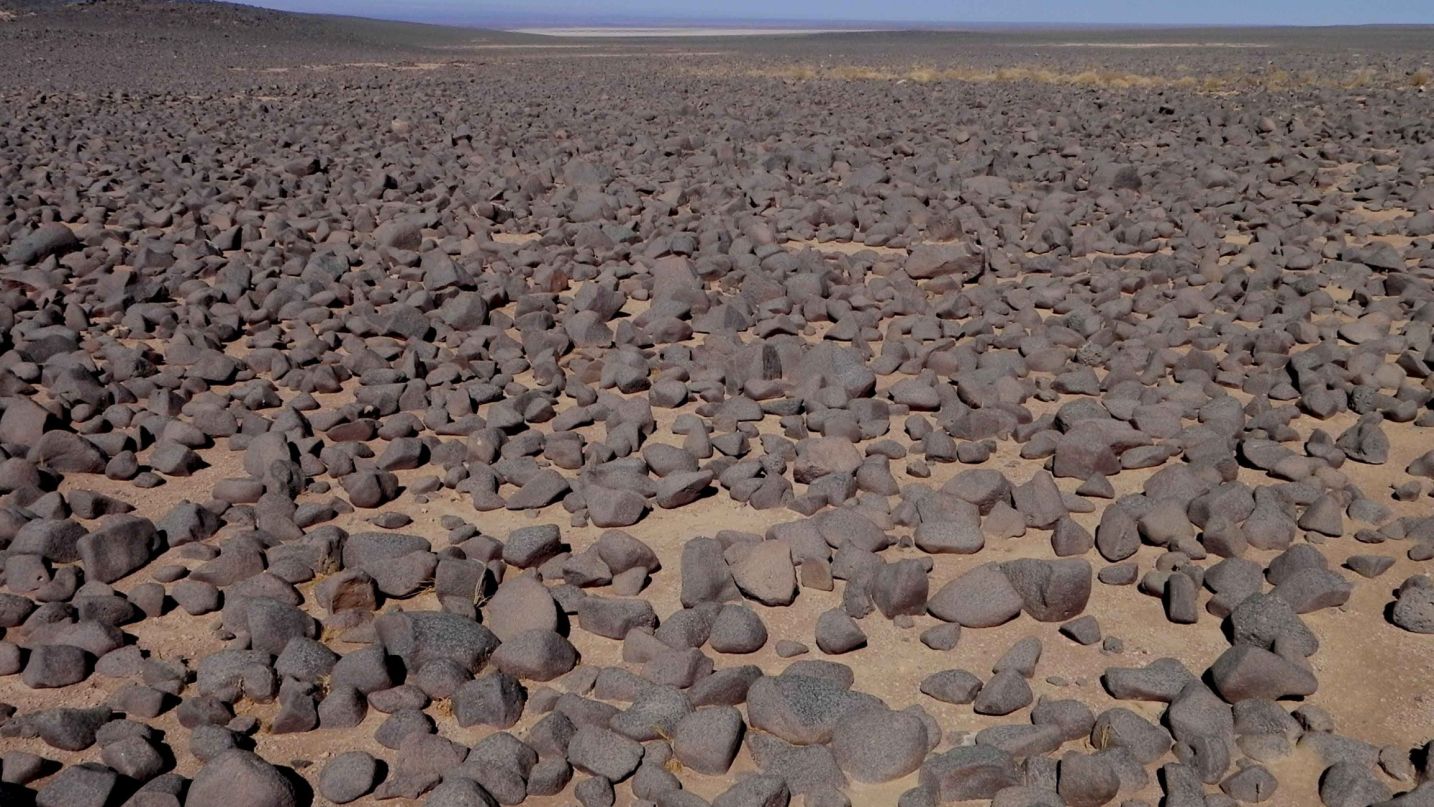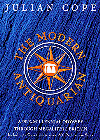<< Other Photo Pages >> Khirbet Abu al-Husayn - Ancient Village or Settlement in Jordan
Submitted by motist on Friday, 16 September 2016 Page Views: 2465
Multi-periodSite Name: Khirbet Abu al-HusaynCountry: Jordan Type: Ancient Village or Settlement
Nearest Town: As Safawi
Latitude: 32.117460N Longitude: 37.997210E
Condition:
| 5 | Perfect |
| 4 | Almost Perfect |
| 3 | Reasonable but with some damage |
| 2 | Ruined but still recognisable as an ancient site |
| 1 | Pretty much destroyed, possibly visible as crop marks |
| 0 | No data. |
| -1 | Completely destroyed |
| 5 | Superb |
| 4 | Good |
| 3 | Ordinary |
| 2 | Not Good |
| 1 | Awful |
| 0 | No data. |
| 5 | Can be driven to, probably with disabled access |
| 4 | Short walk on a footpath |
| 3 | Requiring a bit more of a walk |
| 2 | A long walk |
| 1 | In the middle of nowhere, a nightmare to find |
| 0 | No data. |
| 5 | co-ordinates taken by GPS or official recorded co-ordinates |
| 4 | co-ordinates scaled from a detailed map |
| 3 | co-ordinates scaled from a bad map |
| 2 | co-ordinates of the nearest village |
| 1 | co-ordinates of the nearest town |
| 0 | no data |
Internal Links:
External Links:

Mysterious 6000-year-old Fortresses Found in Jordan Show Surprisingly Advanced Early Society
Settlements with double-fortified walls and irrigated terraces were unexpected deep in the Early Bronze Age desert.
Excavations in the volcanic desert of Jordan have uncovered three surprisingly advanced fortified settlements with artificially irrigated terraced gardens, dating to 6,000 years ago.
The remains of the fortified settlements were discovered atop hills at the edge of North-eastern Jordan´s scorched volcanic desert, close to the Syrian border. Radiocarbon dates date its era between 4000 and 3500 BCE, about 1000 years before the pyramids.
The discovery came as a surprise, since nothing like this old has been found in the inhospitable depths of the Jordan desert, a place that had been considered uninhabitable by primitive society.
Jawa, a fortified site from the 4th millennium B.C.E discovered earlier at the western edge of the region, had been considered to be the most eastern located settlement of the early Bronze Age in the region, Dr. Bernd Müller-Neuhof, head of the excavation project, told Haaretz. Now three others found deeper in the desert, and possibly older, are under study. The discovery of developed three hilltop settlements with fortification walls and stone houses in the rocky, barren area of Khirbet abu al-Husayn, Khirbet al-Ja’bariya and Tulul al-Ghusayn and evidence of well-watered gardens, indicates that a highly developed society had settled in the eastern basalt desert of Jordan around the late 5th to 4th millennium B.C.E. But who they were, and where they came from, remains a mystery.
These fortified settlements may be the earliest of their kind in the Levant or even all of Southwest Asia, the archaeologist heading the study suggests.
The inhabitants of these settlements were not the first people using this region, Müller-Neuhof adds. There is evidence of temporary hunter-herder camps during the Neolithic era. Nonetheless, this is the first evidence of year-round occupation of at least some of the sites, which were first discovered during surveys in the area of north-eastern Jordan by the Orient Department of the German Archaeological Institute between 2010 and 2015. Six years of subsequent research revealed much previously unexpected evidence of elaborate socioeconomic activity in the region, including extensive flint mining and advanced agricultural techniques.
Protecting the scarce resource: Water
Since the area had no regular source of water, the inhabitants engineered a sophisticated system of diverting locally occurring precipitation into terraced gardens, where they saturated sediments for agricultural purposes. Water for consumption was most probably obtained by digging wells in wadi beds and by using lava caves as natural cisterns.
One settlement with fortification walls and simple dwelling structures, discovered at the foot of a volcanic hill and on the hill itself, featured terraced gardens that were watered using sophisticated irrigation systems fed by rainwater run-off. The evidence indicates that the terraces were used to farm grain. Grinding stones for grain were also discovered in the settlements, in association with the houses.
Older than the well-known field irrigation systems in Mesopotamia, these terraces may be the earliest example of irrigation farming using artificially harvested rainwater.
A 2011 survey identified similar terraced gardens at Jawa as well, Müller-Neuhof says.
The archaeologists also found evidence of flint mining and flint tool mass production east of the basalt desert, which might have been related to the settlement activities on the volcanoes.
Why the inhabitants decided to settle in this arid desert region remains a puzzle. Who they might have been is also unknown. The mysterious inhabitants left few traces.
At Jawa, signs of conflict in the walls have been discovered, areas where walls had been battered down and rebuilt. Some think water-hungry nomads of the deserts may have clashed with the immigrants that build the cities over control of the water.
Writing hadn't been invented yet and there is no clue as to the inhabitants' name. Theoretically, their origin might be elucidated by finding similarities, if any, with flint tool assemblages, pottery or other clues in well-known sedentary cultures in the southern Levant and Mesopotamia, Müller-Neuhof explains. However, no clear clues have surfaced yet.
Alternatively, the inhabitants may have been indigenous, deriving from the people who lived in the region during the Late Neolithic.
The discoveries advance our understanding of the earliest cultural development in Mesopotamia and the southern Levant, the birthplace of modern civilization. The 4th millennium B.C.E. was a crucial period in the history of old world civilization, as cultural evolutionary processes began that would enable the development of complex cultures, Among these processes were the beginning of urbanization, the invention of artificial irrigation, mass production of commodities, long-distance trade, and the invention of the precursors of writing and economic administration. The new discoveries move a region hitherto unknown and regarded as peripheral into the focus of research on this crucial period.
You may be viewing yesterday's version of this page. To see the most up to date information please register for a free account.

Do not use the above information on other web sites or publications without permission of the contributor.
Nearby Images from Flickr






The above images may not be of the site on this page, but were taken nearby. They are loaded from Flickr so please click on them for image credits.
Click here to see more info for this site
Nearby sites
Click here to view sites on an interactive map of the areaKey: Red: member's photo, Blue: 3rd party photo, Yellow: other image, Green: no photo - please go there and take one, Grey: site destroyed
Download sites to:
KML (Google Earth)
GPX (GPS waypoints)
CSV (Garmin/Navman)
CSV (Excel)
To unlock full downloads you need to sign up as a Contributory Member. Otherwise downloads are limited to 50 sites.
Turn off the page maps and other distractions
Nearby sites listing. In the following links * = Image available
44.3km NNW 329° Tulul al-Ghusayn* Hillfort
71.0km WNW 288° Khirbet al-Ja’bariya* Hillfort
89.3km WSW 246° Jebel Qurma Petroglyphs* Rock Art
96.6km WNW 285° Jawa* Ancient Village or Settlement
100.3km W 259° Qasr Usaykhim* Stone Fort or Dun
110.6km W 280° Qasr Deir Al-Kahf* Stone Fort or Dun
115.5km WSW 255° Ayn Qasiyya Burials Natural Stone / Erratic / Other Natural Feature
116.3km WSW 259° Azraq Geoglyph* Stone Circle
124.8km WSW 253° Qasr Uweinid* Stone Fort or Dun
125.5km WSW 254° Azraq Desert Kite* Misc. Earthwork
147.4km WNW 299° QanaWat Temple of Helios* Ancient Temple
147.5km WNW 299° QanaWat Nympheum* Holy Well or Sacred Spring
149.2km WNW 288° Bosra* Ancient Village or Settlement
154.9km W 279° Umm el-Jimal* Ancient Village or Settlement
156.5km WSW 255° Kharaneh IV* Ancient Village or Settlement
157.3km W 269° Qasr al-Hallabat* Stone Fort or Dun
161.1km WSW 237° Qasr Tuba* Ancient Palace
186.4km WNW 288° Tal al-Ashari Barrow Cemetery
191.0km W 266° Ain Ghazal* Ancient Village or Settlement
194.3km NW 311° El-Leja Desert Kite* Misc. Earthwork
195.3km W 265° Amman Citadel* Ancient Village or Settlement
195.3km W 265° Jordan Archaeological Museum* Museum
196.7km W 265° Amman.* NOT SET
196.9km NW 317° Tell Aswad Ancient Village or Settlement
198.9km W 276° Jerash* Ancient Village or Settlement
View more nearby sites and additional images






 We would like to know more about this location. Please feel free to add a brief description and any relevant information in your own language.
We would like to know more about this location. Please feel free to add a brief description and any relevant information in your own language. Wir möchten mehr über diese Stätte erfahren. Bitte zögern Sie nicht, eine kurze Beschreibung und relevante Informationen in Deutsch hinzuzufügen.
Wir möchten mehr über diese Stätte erfahren. Bitte zögern Sie nicht, eine kurze Beschreibung und relevante Informationen in Deutsch hinzuzufügen. Nous aimerions en savoir encore un peu sur les lieux. S'il vous plaît n'hesitez pas à ajouter une courte description et tous les renseignements pertinents dans votre propre langue.
Nous aimerions en savoir encore un peu sur les lieux. S'il vous plaît n'hesitez pas à ajouter une courte description et tous les renseignements pertinents dans votre propre langue. Quisieramos informarnos un poco más de las lugares. No dude en añadir una breve descripción y otros datos relevantes en su propio idioma.
Quisieramos informarnos un poco más de las lugares. No dude en añadir una breve descripción y otros datos relevantes en su propio idioma.